Stylish Spoon chef shares top recipes for healthy eating during New Years
Chef and president of Stylish Spoon, Ilana Eck, joins 'Fox & Friends Weekend' to share her favorite recipes ahead of the new year.
For many of us, a traditional New Year's feast is comprised of Champagne and whatever confetti happens to fall into it while we're drinking it.
But for lots of revelers around the world, New Year's is a time to eat symbolic (and perhaps more substantial) treats and meals.
Cultures from nearly every continent celebrate the New Year with their own unique foods — many of which are eaten in the hopes of bringing luck, good health or prosperity in the near future.
WHY DOES FRUITCAKE LAST SO LONG? INGREDIENTS AND PREPARATION OF THE DESSERT PLAY INTO ITS LONGEVITY
So if you're looking for a fun way to ring in the New Year that won't result in a pounding headache or confetti in your teeth, try one of the worldly delights noted below.
Diving right in here.
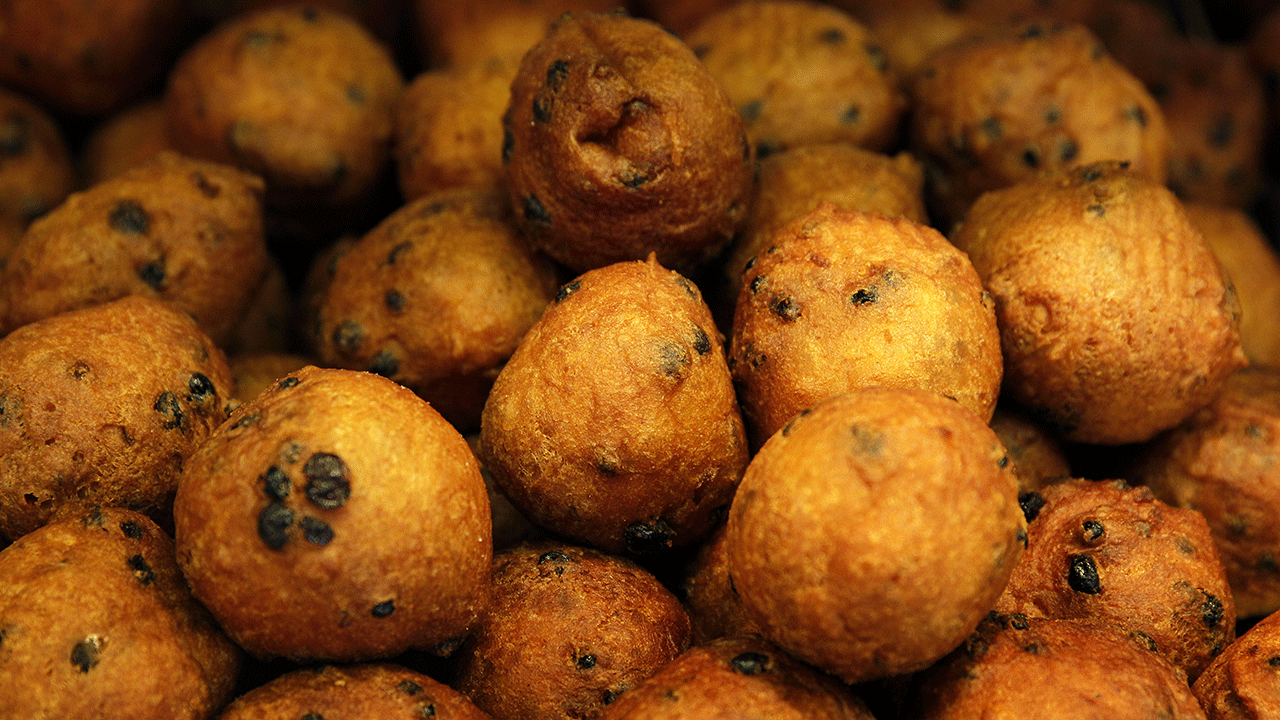
Oliebollen are small doughnuts that are prepared on New Year's Eve in the Netherlands. (Bas Czerwinski/AFP via Getty Images)
The Netherlands: Oliebollen
On New Year's Eve in the Netherlands, the Dutch traditionally prepare and eat oliebollen, or small doughnuts studded with dried raisins or currants.
The tradition of eating oliebollen (literally "oil balls") is thought to have originated with early Germanic tribes as a way to ward off the pagan goddess Perchta, who would fly through the skies during Yule and slice open the bellies of disobedient tribespeople.
Anyone who had eaten oliebollen, however, was spared, as Perchta's sword would slide off their full, greasy bellies.
SAY GOODBYE TO THESE HABITS HOLDING YOU BACK IN 2023
Spain: 12 grapes
Lots of people sip some bubbly to welcome in the New Year, but in Spain (and in some parts of Latin America) they'll be gulping down the grapes themselves.
The tradition of eating 12 grapes at midnight began in the 1880s as a way of "copying the French tradition of having grapes and Champagne on the last day of the year," noted NPR. This custom was ultimately adopted by Madrileños, or inhabitants of Madrid, who would travel to Puerta del Sol "to see the bells chime at the turning of the year and, most likely in an ironic or mocking manner, eat grapes like the upper class," the outlet said.
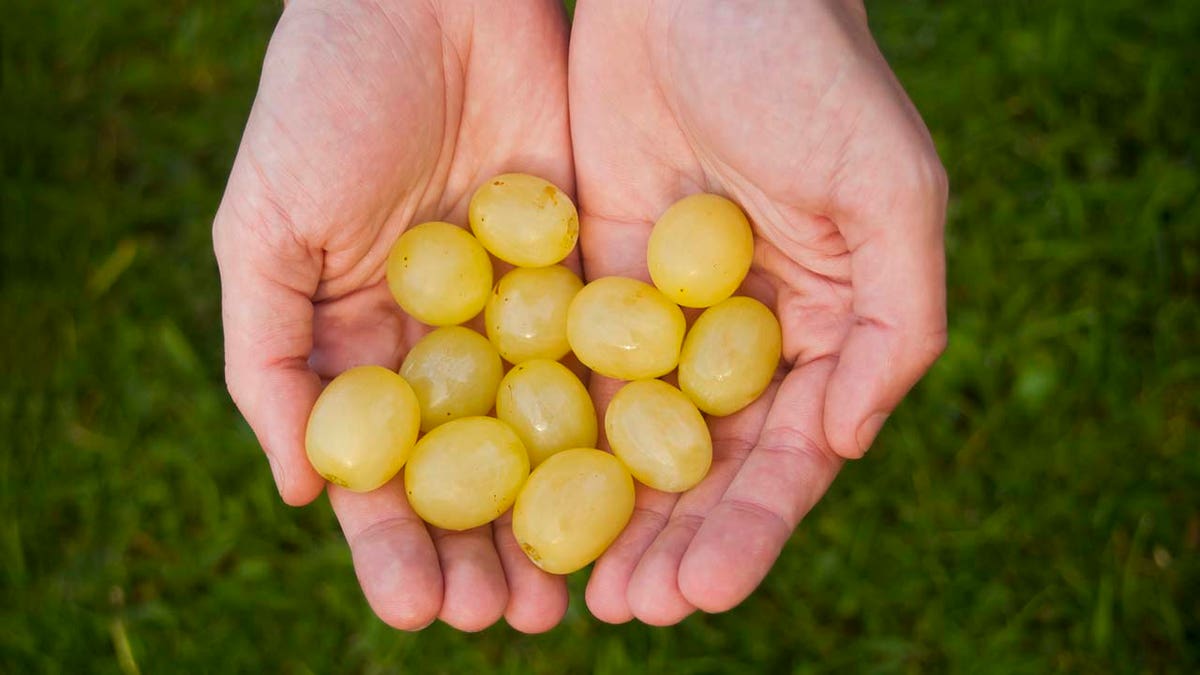
Twelve grapes are traditionally eaten on New Year's Eve in Spain. (iStock)
Today, this method still lives on, and residents can even purchase their 12 grapes in small tins, already seeded and peeled.
(It's also sometimes said that the grapes must be eaten within the first 12 seconds of the New Year to welcome 12 lucky months.)
If luck in love is what you are looking for, it's said that eating your grapes under a table could do the trick.
Italy: Cotechino con Lenticchie
Italians know a thing or two about preparing a feast, so it only makes sense that they'd whip up a mouthwatering cotechino con lenticchie for New Year's.
This traditional stew is made with pork and lentils, which have been described as "two of Italy’s culinary symbols of good luck."
For example, some Italians believe that pigs, who push their snouts forward along the way rather than backward, are symbolic of progress. As for lentils, they’re already shaped like miniature coins, symbolizing fortune. Therefore, eating this hearty dish on New Year's is said to ensure a prosperous 12 months.
Berlin: Berliner Pfannkuchen
In Berlin, different varieties of jelly doughnuts known as Berliner Pfannkuchen are purchased at local bakeries on Dec. 31 and enjoyed later in the evening.
Some folks even eat these fluffy treats "to nurse [a] hangover the next day," said The New York Times.
NEW YEAR'S QUIZ! HOW WELL DO YOU KNOW THESE FACTS ABOUT RINGING IN A NEW YEAR?
And while the Berliner Pfannkuchen is usually filled with a fruit jam, like plum, apricot or raspberry, be warned: It's "a common practical joke to fill some with mustard instead of jelly to trick unsuspecting guests," said History.com.
Greece: Vasilopita
When it comes to celebrating New Year’s Eve like the Greeks, vasilopita is the dessert you should have on the table.
"A piece is cut for each family member. If the coin is in your piece, you supposedly have good luck for the rest of the year."
Greek American nutritionist Elena Paravantes describes this dish as a moist cake made with traditional ingredients like sugar, milk, eggs, and even orange and orange zest, although it can also be made with yeast for a "more bread-like" consistency.
"Vasilopita is the Greek lucky New Year’s cake that has a coin hidden in it and is cut at midnight," said Paravantes. "A piece is cut for each family member. If the coin is in your piece, you supposedly have good luck for the rest of the year."
Many vasilopitas are decorated with the date of the New Year, but they can also be topped with sliced almonds or a simple dusting of powdered sugar.
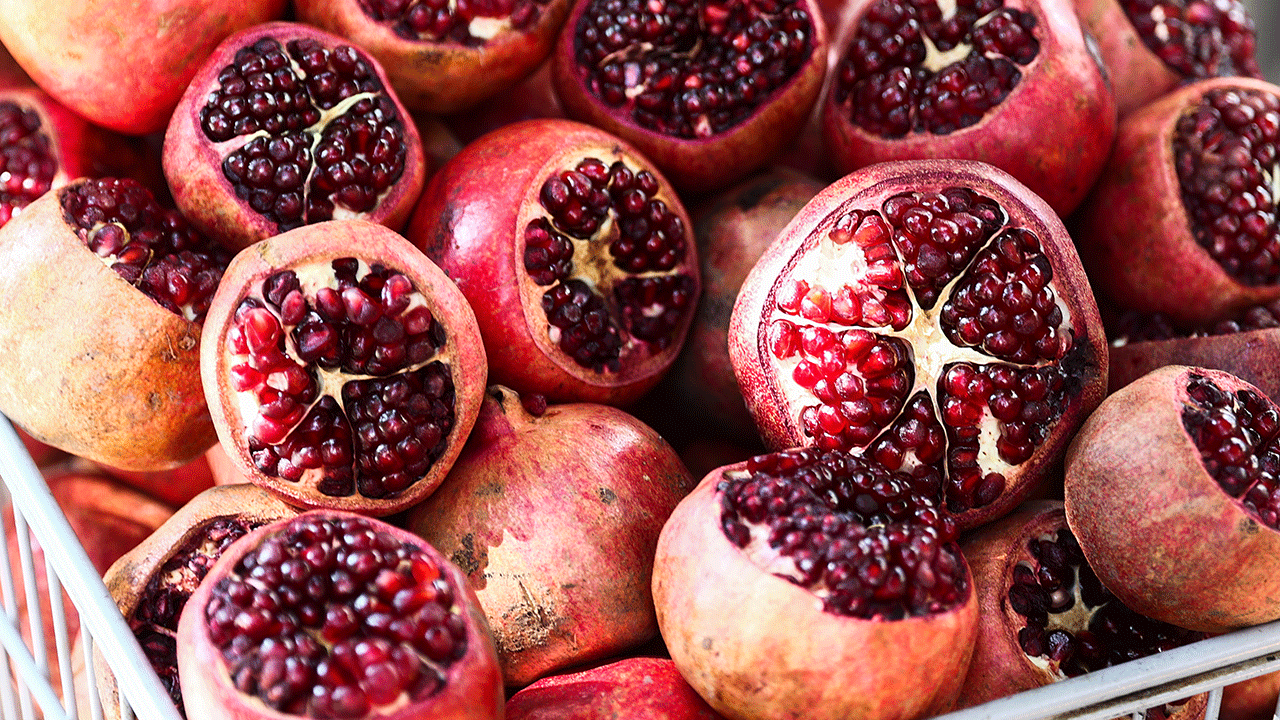
It's tradition in Greece to smash pomegranates on New Year's Eve to bring good luck. (Jakub Porzycki/NurPhoto via Getty Images)
Also in Greece, pomegranates have been a symbol of good luck, specifically when it comes to fertility. Often in the country, pomegranates are not consumed, but rather smashed on the ground for a stroke of good luck.
If you don’t want to smash a pomegranate, there are plenty of dishes featuring the fruit you can whip together for extra luck this New Year. One idea is a yummy pomegranate-based drink, alcoholic or otherwise.
In addition to pomegranates, it's Greek tradition to hang onions on doors as a sign of rebirth. If you want to add some onions to your New Year’s spread in honor of this tradition, french onion soup or crispy onion rings are a good way to do so.
Japan: Toshikoshi Soba
On New Year’s Eve, the Japanese savor a bowl of hearty soba noodles known as toshikoshi soba, or "year-passing" noodles. "The buckwheat noodles are longer than usual because the soba symbolizes longevity," reported The Chicago Tribune.
THE HISTORY BEHIND THE NEW YEAR'S EVE BALL DROP CEREMONY
"According to some historians, soba is supposed to signify strength and resiliency, since the buckwheat plant itself bounces back even after being flattened by wind and rain," added The Japan Times, which also noted that the long noodles "may signify the [eater's] wish for a long life."
(And if they're feeling superstitious, some diners avoid cutting the noodles while eating to ensure lasting luck. In other words, start slurping!)
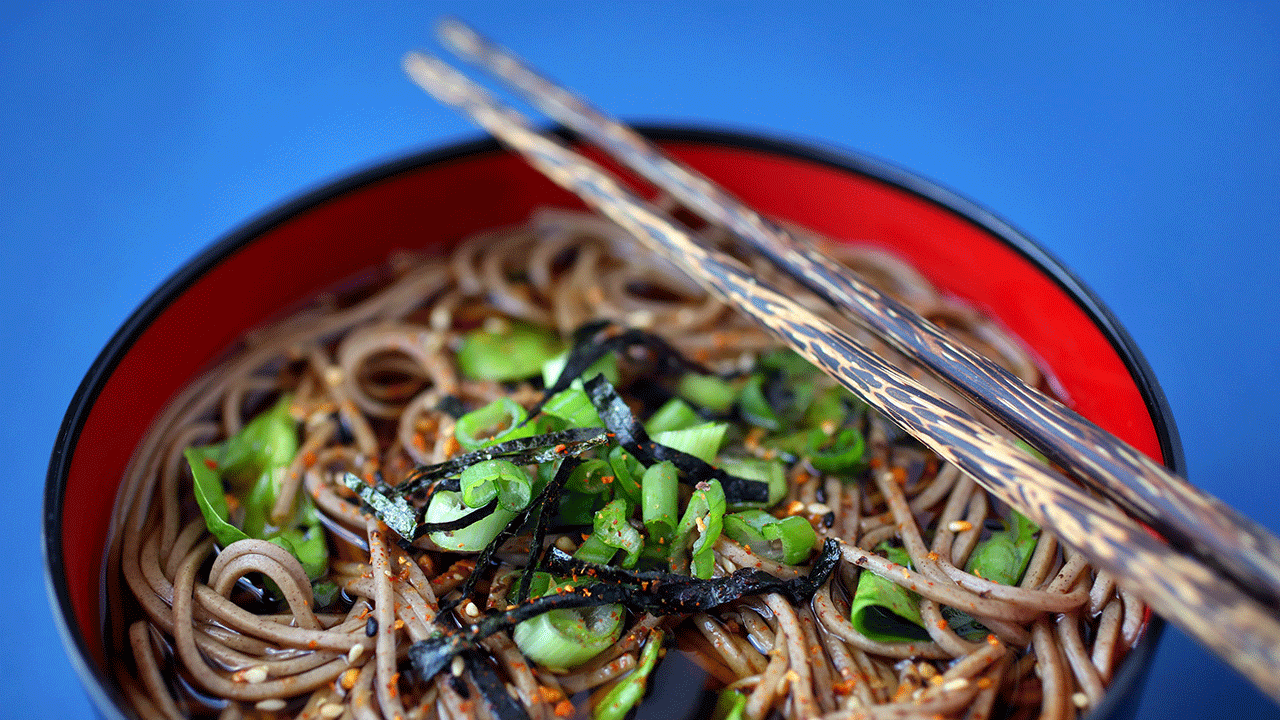
A Japanese tradition is to eat toshikoshi soba, or "year-passing" noodles for New Year's Eve. (Christian Gooden/St. Louis Post-Dispatch/Tribune News Service via Getty Images)
American South: Black-eyed peas, Hoppin' John
It's common to see black-eyed peas on the New Year's table in many parts of the American South, often as an ingredient in Hoppin' John (a Carolina dish of rice, peas and bits of pork).
The theories behind these dishes differ, but according to cookbook author and New York Times contributor Jessica B. Harris, the African slaves en route to America survived on black-eyed peas, and later planted the hardy crops upon arriving, so "having some extra on hand at the New Year guaranteed sustenance provided by a new crop."
CLICK HERE TO SIGN UP FOR OUR LIFESTYLE NEWSLETTER
Another theory suggests that black-eyed peas came to be considered lucky sometime after the Civil War, when Union soldiers ate the rest of the Southern crops but ignored the peas, allowing the locals to sustain themselves.
Black-eyed peas are often served with collard greens and cornbread.
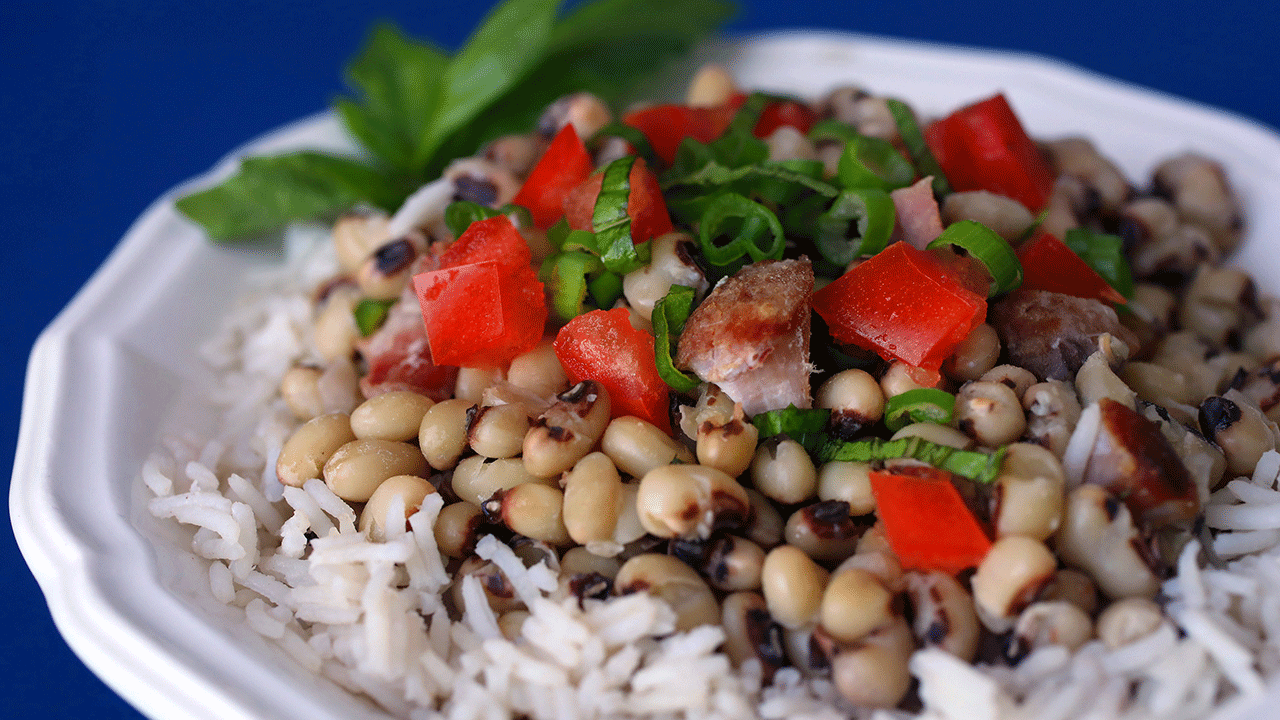
Black-eyed peas, a common New Year's dish in southern America, are often served with collard greens and cornbread. (Christian Gooden/St. Louis Post-Dispatch/Tribune News Service via Getty Images)
Ireland: Buttered bread (and banging bread)
Irish households would sometimes leave buttered bread (or bread and butter sandwiches) on their doorsteps on New Year's Eve for local children to come and collect, according to historians.
The holiday is sometimes called "The Day of the Buttered Bread" in Gaelic.
Another tradition reportedly involves banging a stale loaf of "Christmas bread" against the doors and walls of the house to scare away any bad spirits.
Mexico: Tamales
Over in Mexico, tamales are a food often served on holidays, and New Year’s is no different. When tamales are put together, the steps to make them are typically split among multiple family members. This dish is a very family-oriented one that takes help from the whole family to make.
CLICK HERE TO GET THE FOX NEWS APP
Tamales are a fairly time-consuming dish, made up of a corn-based dough stuffed with meat and other toppings, and wrapped in corn husk, so you’ll need all hands on deck.
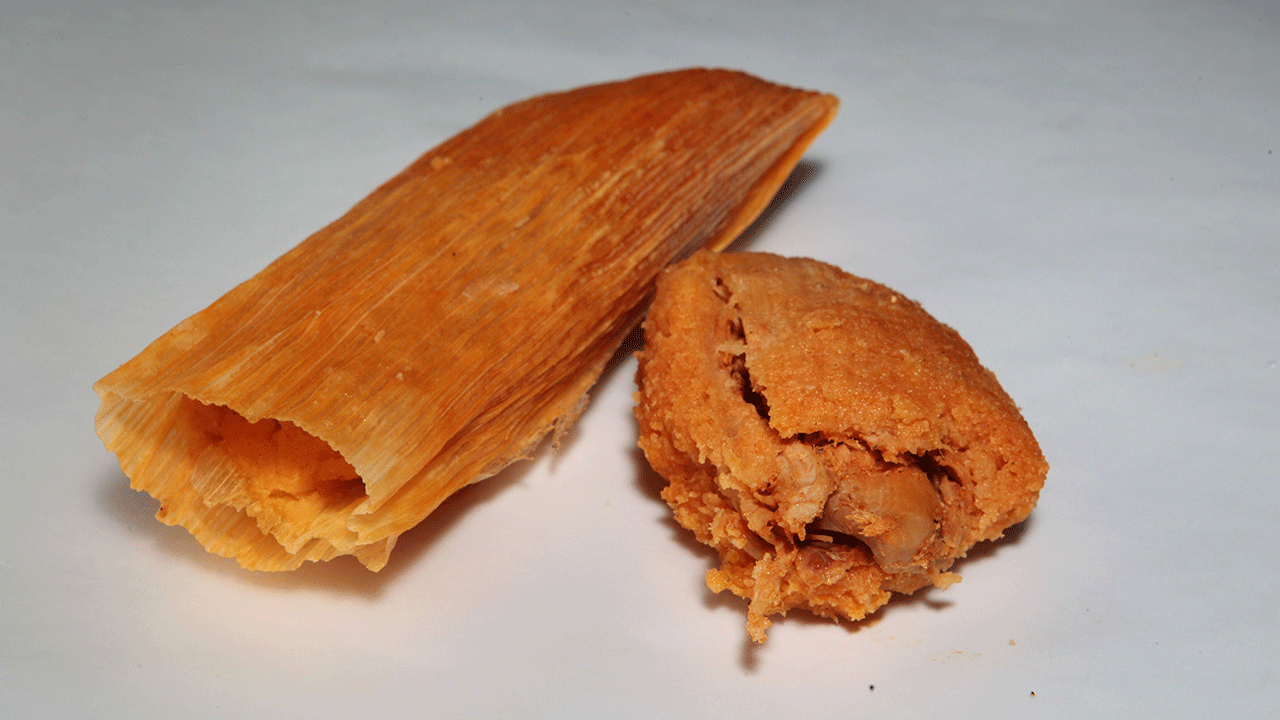
Making tamales traditionally involves multiple members of the family working together. (James Nielsen/Houston Chronicle via Getty Images)
Germany: Soft pretzels
A New Year’s feast in Germany will often feature soft pretzels.
These pretzels are "seen as a symbol of good luck, prosperity and spiritual fulfillment," said History.com.
Sauerkraut, lentil soup and fondue are usually on the menu as well.
Michael Bartiromo contributed reporting.
For more Lifestyle articles, visit www.foxnews.com/lifestyle.

